The lack of the lactase enzyme means that dairy products do not digest properly. And since most illnesses begin as poor digestion in the gut, simple lactose intolerance can lead to a severe health problem.
In this guide on how to go dairy-free, we will first look at:
-
The benefits of removing dairy from your diet
-
We'll question the belief that you need dairy for specific nutrients.
-
And finally what foods and drinks you need to avoid to go dairy-free.
-
Healthy and delicious alternatives to your favorite dairy foods
-
Simple dairy-free recipes
-
How to deal with cravings
- Tips to eating dairy-free when you're traveling, on vacation, eating at a restaurant or at a dinner party
The Problems with Dairy
First, let's describe the word dairy. You can define dairy as foods and beverages that contain the milk of mammals.
Animal Welfare
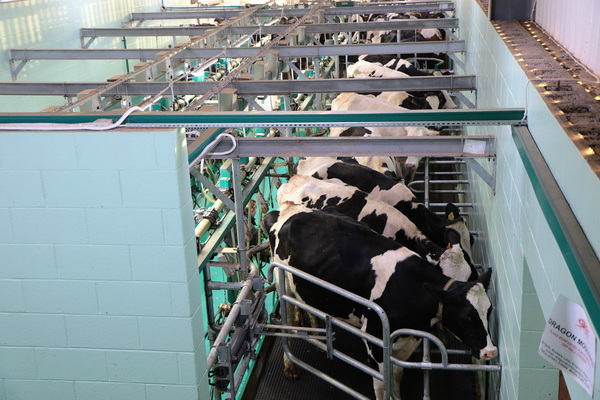
If you picture an idyllic dairy farm in your mind, like the ones in dairy marketing messages, you need some reeducating.
Environmental Concerns
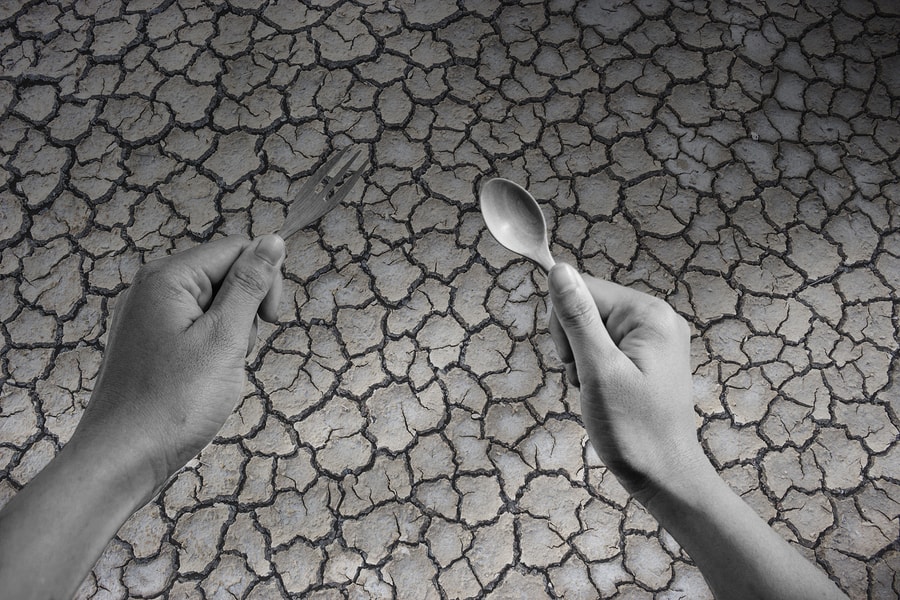
Do you like yogurt?
Additionally, it takes:
-
109 gallons of water to make a single stick of butter
-
42 gallons to produce just one scoop of ice cream
-
2 slices of your favorite cheese uses roughly 50 gallons of water
Health Concerns
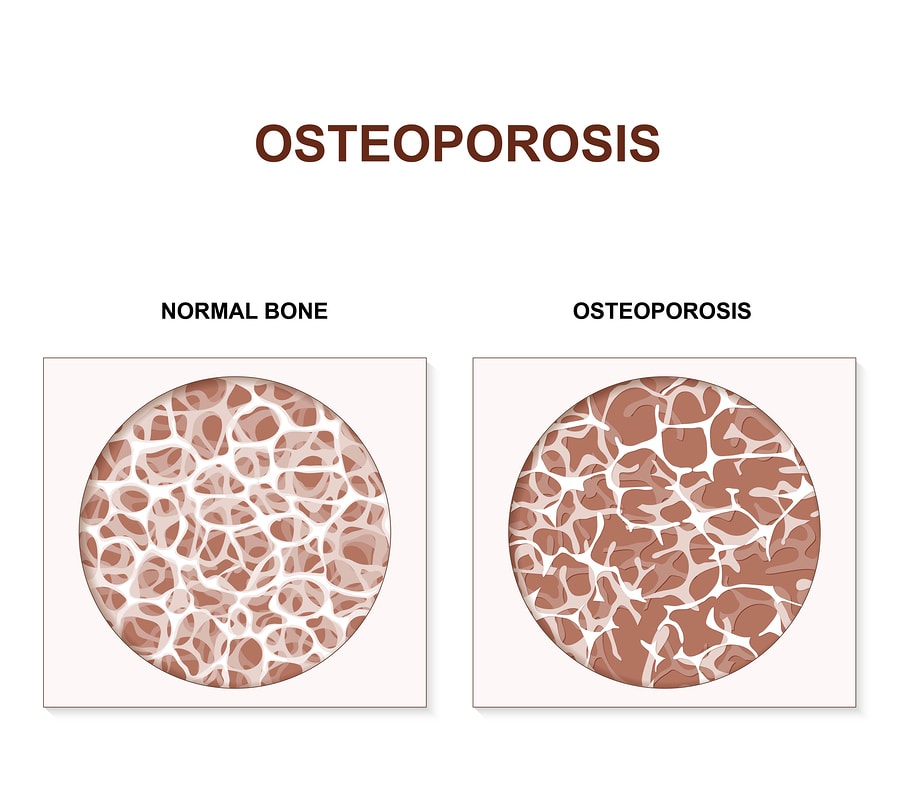
When you cut out dairy, you:
-
Promote humane animal farming
-
Help the planet
-
Become healthier
How To Go Dairy Free
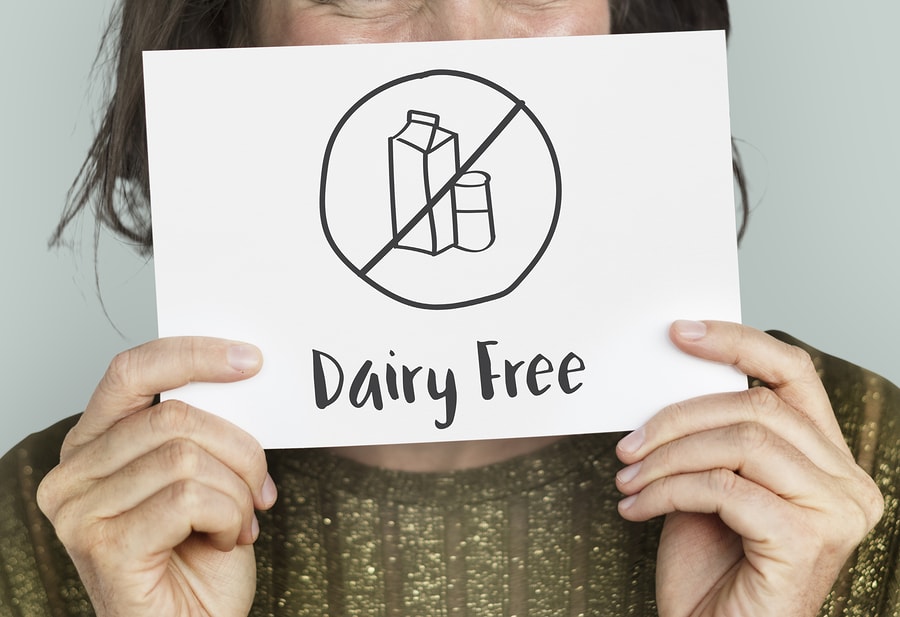
Getting All Your Nutrients Without Dairy
Vitamin D
But just 10 minutes in the midday sun causes your body to produce enough vitamin D to meet your daily requirements. And if you live in northern parts of the world or have less sunlight exposure, eat more Vitamin D rich foods like:
- Sardines
- Tuna
- Cod liver oil
- Salmon
Calcium
You may think you need to drink dairy milk to get plenty of calcium.
But there are plenty of calcium-rich foods that aren't dairy like:
- Sunflower seeds
- Sesame seeds
- Green beans
- White beans
- Carrots
- Figs
- Broccoli
- Sweet potatoes
- Almonds
- Oranges
- Butternut squash
- Edamame and Tofu
- Sardines
Riboflavin
Better known as vitamin B2, Riboflavin is responsible for healthy blood cells that provide you with abundant energy. It is found in dairy milk, but there are better sources to give you all the B2 you need:
- Meat and organ meat
- Green leafy vegetables
- Beans and legumes
- Nuts and seeds
- Bananas
- Asparagus
Vitamin B12
Milk, dairy products, meat, and fish are good sources of vitamin B12. And you need this nutrient to prevent anemia and nervous system damage.
Plants don't produce vitamin B12, so fortified foods and supplements are the only dependable sources if you are vegan.
If you don't eat dairy you can get your recommended allowance of B12 by eating:
- Sardines
- Wild-caught salmon
- Nutritional yeast
- Grass-fed lean cuts of beef
If you do not eat meat or fish, you can find it in B12 fortified foods found in vegan spreads, nutritional yeast, yeast extracts, breakfast cereals or you can supplement.
Iodine
-
Strawberries
-
Navy beans
-
Potatoes
-
Sea vegetables like kelp
-
Cranberries
-
Fish and shrimp
-
Turkey breast
-
Tuna
-
Eggs
-
Himalayan crystal salt
What to Avoid
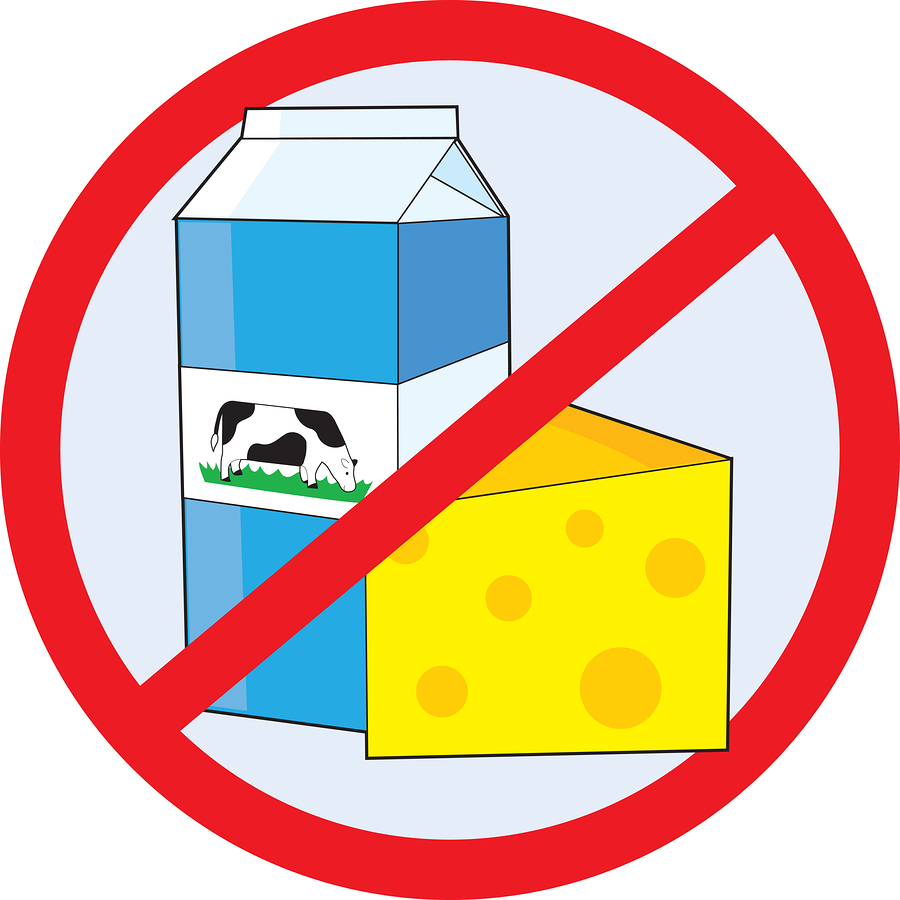
It's no big newsflash that a lot of dairy-based products have milk in them. This is what causes dairy intolerances and associated health problems in so many people.
If you are considering going dairy-free, these are the foods you want to avoid:
-
- Cheese – If you eat an aged cheese, it is going to have less lactose than processed cheeses
- Butter
- Processed milk chocolate
- Cream – Half and half, whipped cream, sour cream
- Dairy milk and condensed milk, buttermilk, powdered milk, evaporated milk
- Yogurt
- Ice cream
- Cottage cheese
- Mayonnaise
Additionally, as much as 75% of all processed foods contain some dairy product. This means the following foods have a good chance of containing lactose.
- Potato chips
- Fortified baby cereals
- Tomato sauce
- Chicken nuggets
- Fish sticks
- Granola bars
- All-beef hot dogs have a good chance of containing lactose, cheese or some other dairy product
By the way, the word to look for on food labels is “lactose.”
A Guide to the Top Dairy Alternatives
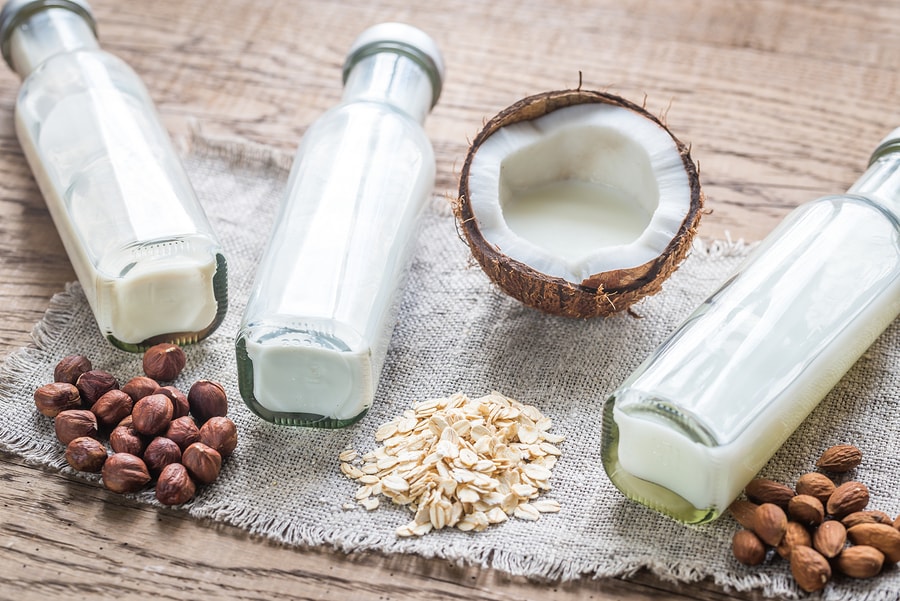
The healthiest diets in the world recommend eating organic when you can.
Specific alternatives to dairy products
Check out these recommendations
Instead Of:
Non-Dairy Alternative
Instead of Cow's Milk:
Replace with milk made from almonds, soy, cashews, hemp, or coconut
Instead of Butter:
Replace with ghee, coconut oil, olive oil, Miyoko's Vegan Butter made with organic coconut oil and cashews
Instead of Cottage Cheese:
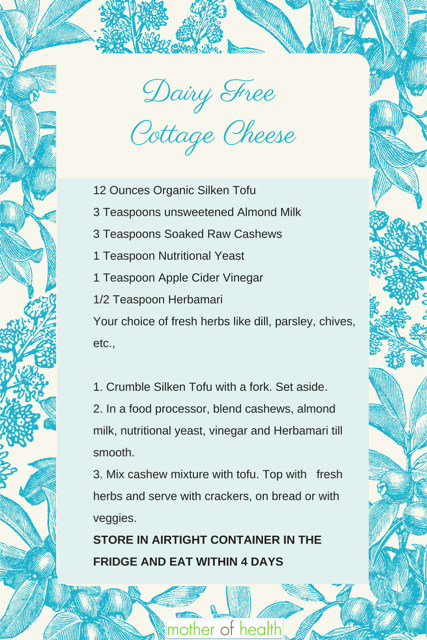
Instead of Cheese:
Replace with smoked tofu slices, homemade guacamole, nutritional yeast, and vegetarian or vegan cheeses sold as dairy-free.
Instead of Processed Chocolate:
Replace with unprocessed organic chocolate (ingredients should only list cocoa butter and cocoa solids), and dark or semi-sweet chocolate with no lactose or dairy products on the ingredients label.
Instead of Creams:
To replace half-and-half and other creams, combine silken tofu with a nut milk. Or mix 2 cups of nut or coconut milk with 4 tablespoons of date syrup and mix well in a high-speed blender or food processor.
To make a date syrup add 1 cup of hot water to 1 cup of Medjool pitted dates in food processor.
Another one of my favorite new cream replacement products is Organic Heavy Coconut Cream from Thrive Market. It's a simple way to make a rich, thick, non-dairy cream without refined sugars, additives or preservatives.
Ice Cream:
There are nondairy almond and coconut based ice creams that are surprisingly delicious. My two favorites are Ben & Jerry's and Luna & Larry's Coconut Bliss.
Instead of Yogurt:
Look for yogurts with a coconut base rather than dairy products. Or choose those which dairy-free, only after reading the ingredients.
Instead of Mayonnaise:
Online health food stores like Amazon offer dairy-free mayonnaise alternatives.
Recommended Dairy-Free Cookbooks
Tips to Eating Dairy-Free When You Are Out and About
Before choosing a restaurant, you can look at the website GoDairyFree.org which has a Recommended Restaurant listing you can access for non-dairy dining.
But, the smartest way to eat dairy-free when you are at a restaurant or a party is to let your server know that you can't have dairy, so they can help you order a dish that accommodates your diet. They just want you to have a good time and enjoy the meal!
Don't be shy about asking a lot of questions, especially if you are unclear. And don't worry about offending your server with your concerns or requests.
Tips for remaining dairy-free when you are traveling, on vacation, eating at a restaurant or a dinner party
Dealing with Dairy Cravings
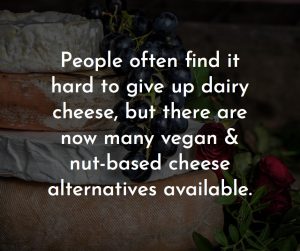
Drink a tall glass of water
Remove yourself from the craving environment
Cut down on the stress
It is incredible how mental stress can cause physical health problems.
Stress limits the amount of “feel good” chemicals in your body and continues the production of “feel bad” chemicals and hormones. It's in this way that the stress in your life can lead to emotions that are easy prey for food cravings. Try to identify the stressors in your life, and consciously work to avoid them.
Eat protein
Drink a cup of nut milk
Once you find your favorite nut milk (almond, cashew, coconut milk, etc.), keep it handy. When you crave cheese or some other type of dairy-based food, drink 4 to 6 ounces of your preferred alternative milk. This is often all you need to do to control your cravings.
Here's my favorite nut milk. I can promise you… If you have this nut milk in your fridge, you won't want cow's milk! It's delicious! You can also thicken it up by blending with a few Majool dates to make a delicious coffee creamer.
Cashew Chai Milk
Yield 2-4 servings
Active Time 10 minutes
*Originally published on Thrive Market Blog
Ingredients
- 1 cup raw cashews
- 3 pitted Medjool Dates
- 1 tablespoon maca powder
- 1 teaspoon ground cinnamon
- 3/4 teaspoon ground cardamom
- 3/4 teaspoon ground ginger
- 1/4 teaspoon black pepper
- Pinch of sea salt
Instructions
Soak cashews overnight in water in a large container. Rinse and drain the next day, then place cashews in a high-speed blender along with 4 cups of water and all remaining ingredients. Blend on high until creamy, then store in the fridge at least 2 hours. If a smoother texture is desired, strain mixture through a fine mesh sieve and discard solids before serving.
Store covered in the fridge and use within five days.
Begin planning your meals
Cravings often appear as a byproduct of a disorder. Aim to eat at the same time each day and plan your meals ahead of time. If you establish a reliable eating schedule and plan your meals whenever possible, it will help you eat healthier.
The Conclusion of How To Go Dairy Free
I hope this guide helped you learn more about how to go dairy free. With more and more people on plant-based diets and so many delicious dairy alternatives, dairy sales around the world are in decline. In fact, I just read an article about a major Australian dairy supplier who announced a shut down of 3 plants because no one wants cow's milk anymore! The trend is expected to continue.
There are a lot of benefits of cutting dairy out of your diet. You promote a healthier planet, conserve water and land resources, and say “Yes!” to a more humane animal farming practices.
You also give yourself a better chance at avoiding the obesity, cancer, poor bone health, multiple sclerosis and diabetes linked directly to dairy consumption.
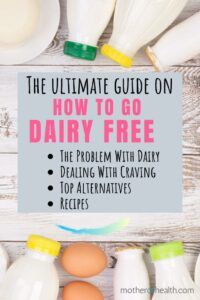

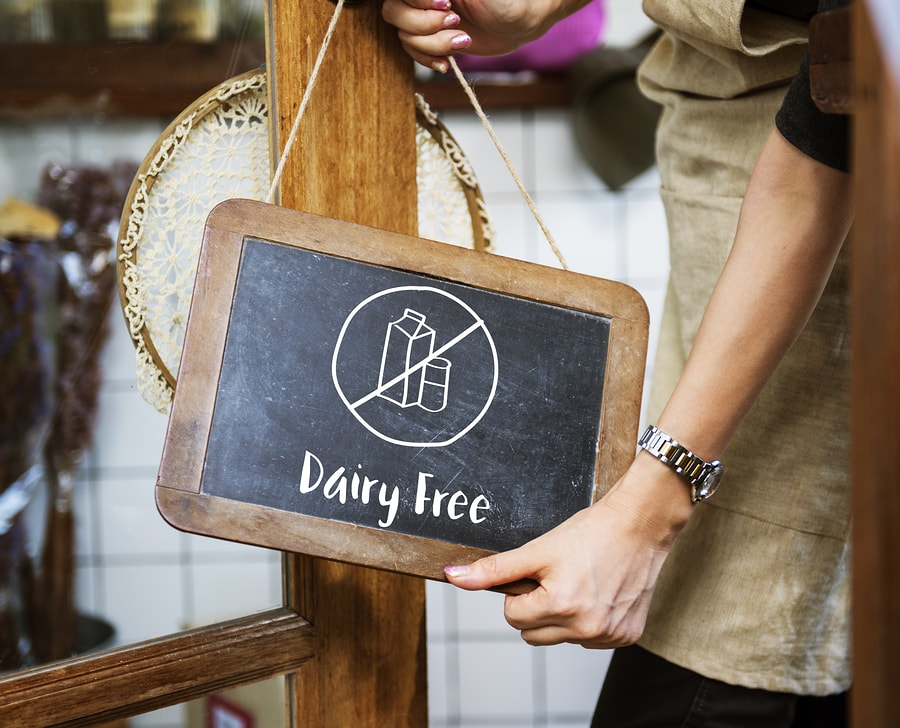






Your website is very clean and I love the style of it. Perfect for holistic health. I do agree with you about dairy. That stuff has a lot of HGH in it whichmust do something bad to the human body. I mean look at how much baby cows grow in a short space of time, there is definitely something in that milk. It is so important what you mentioned about the animal wealfare as well.
Them animals are treated terribly. Very informative!
Thanks for visiting us, Josh. Animal welfare is one of the main reasons I decided to go dairy-free!